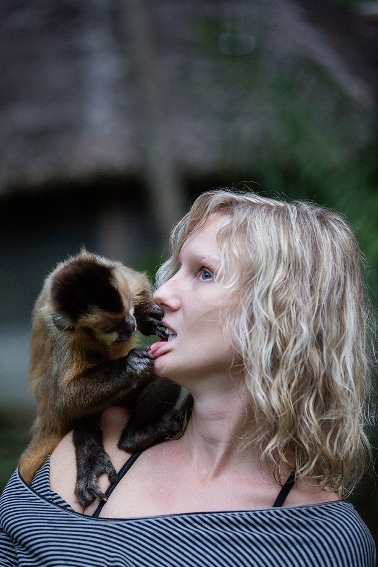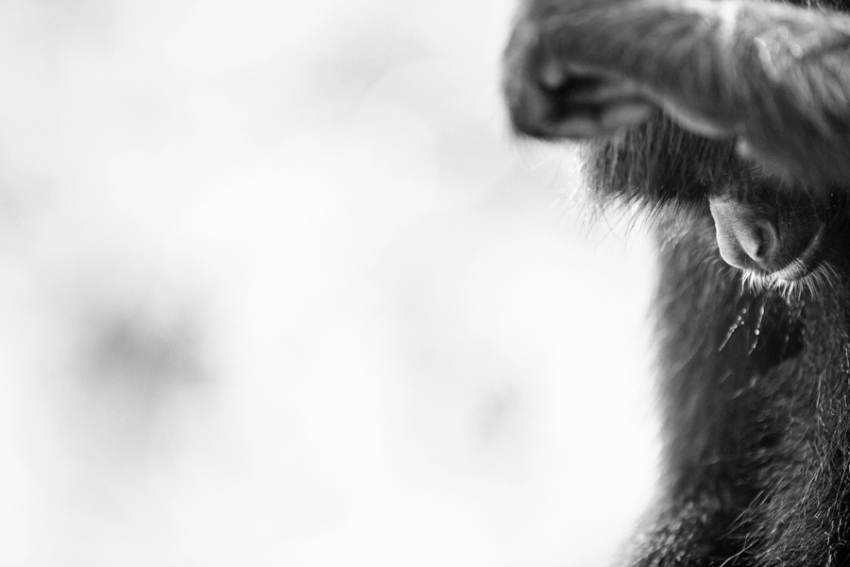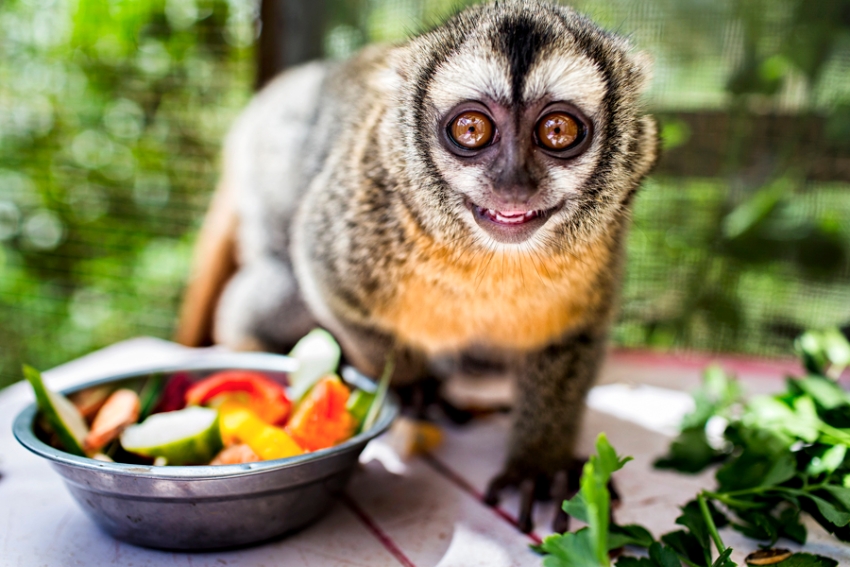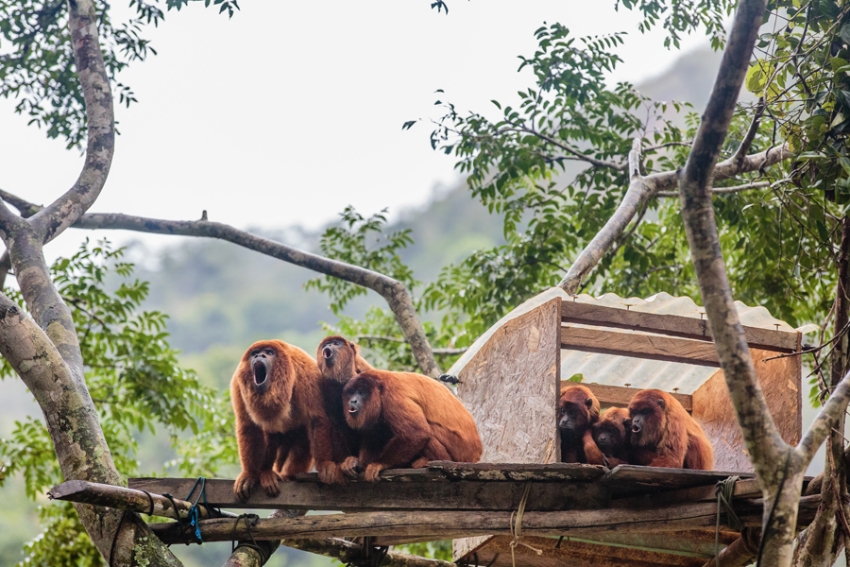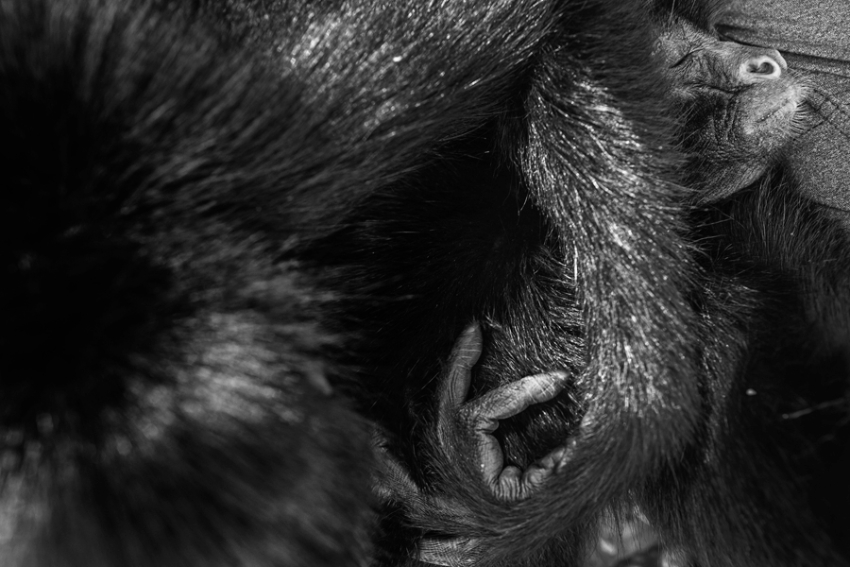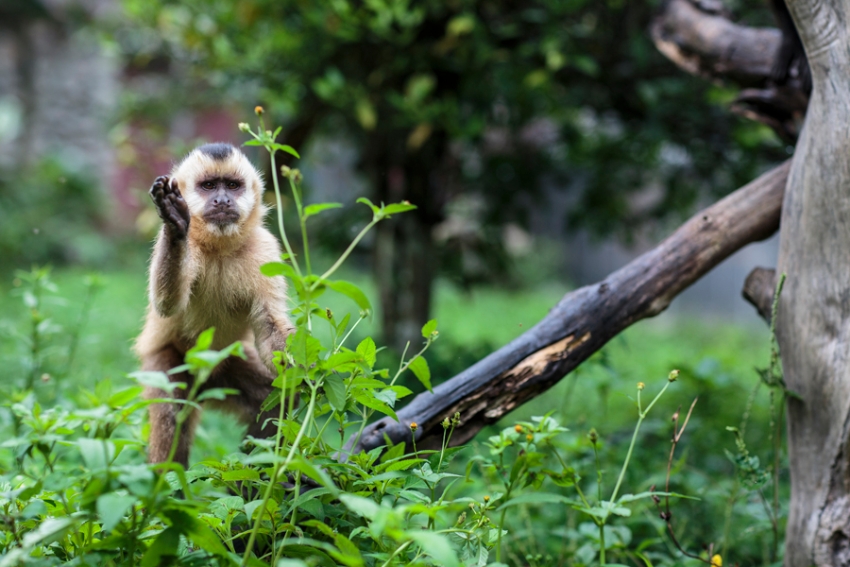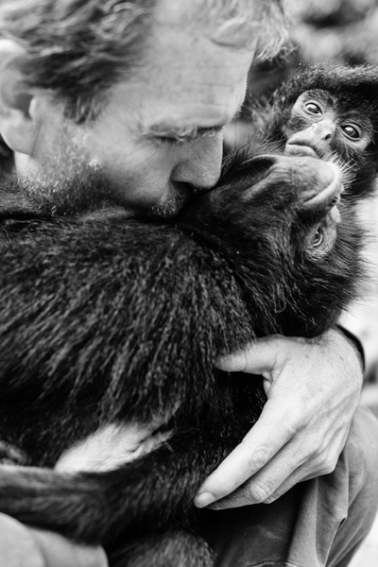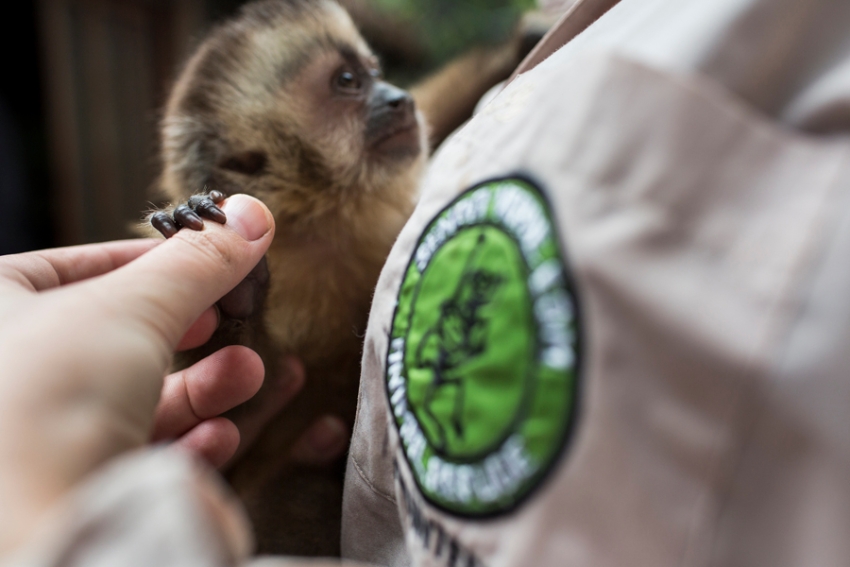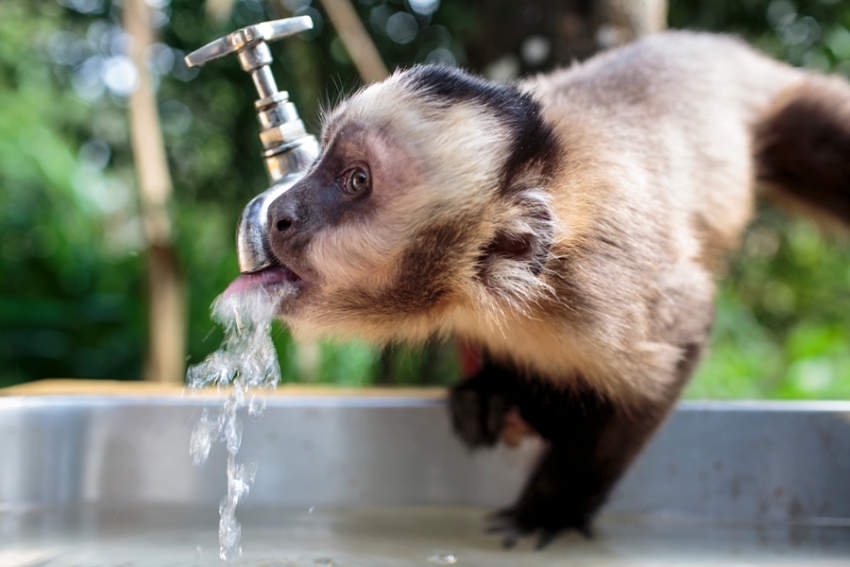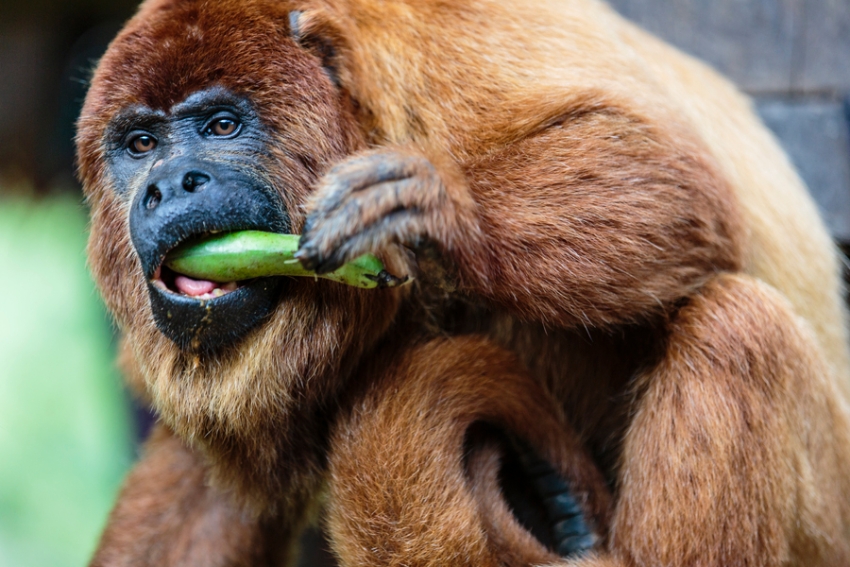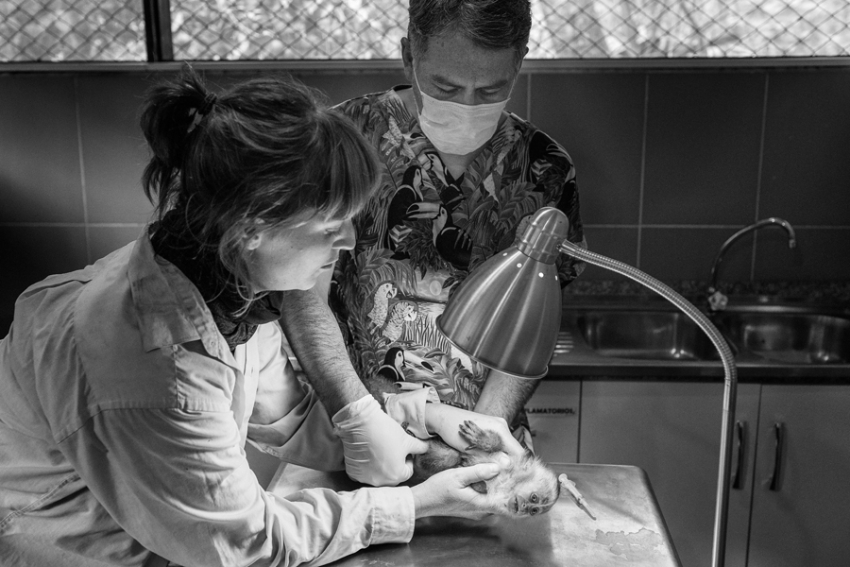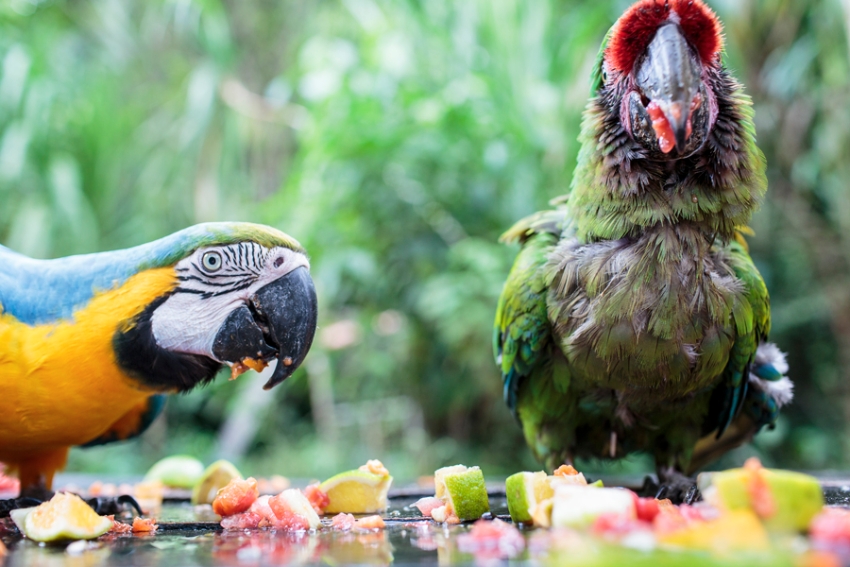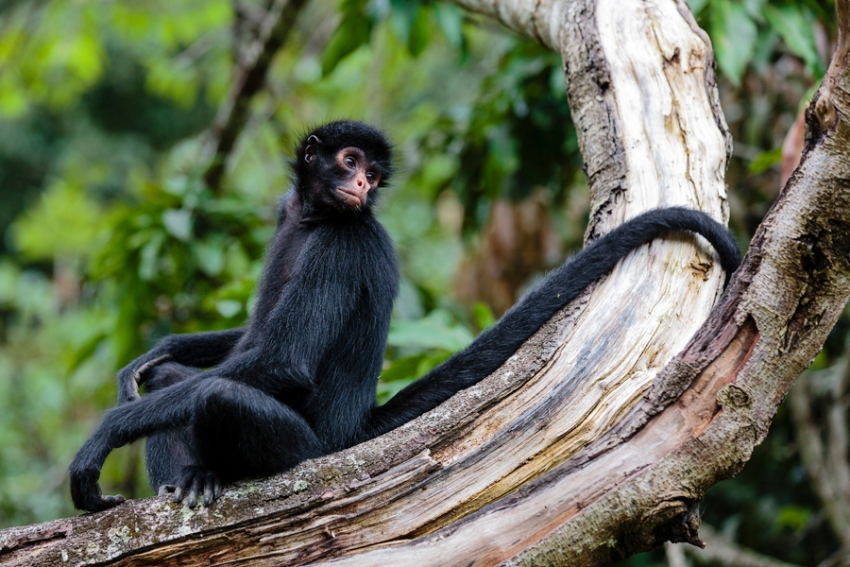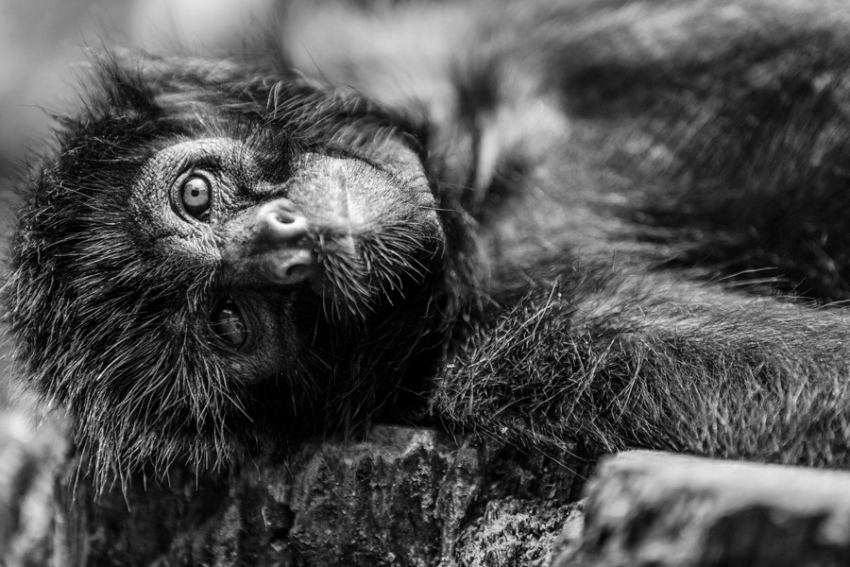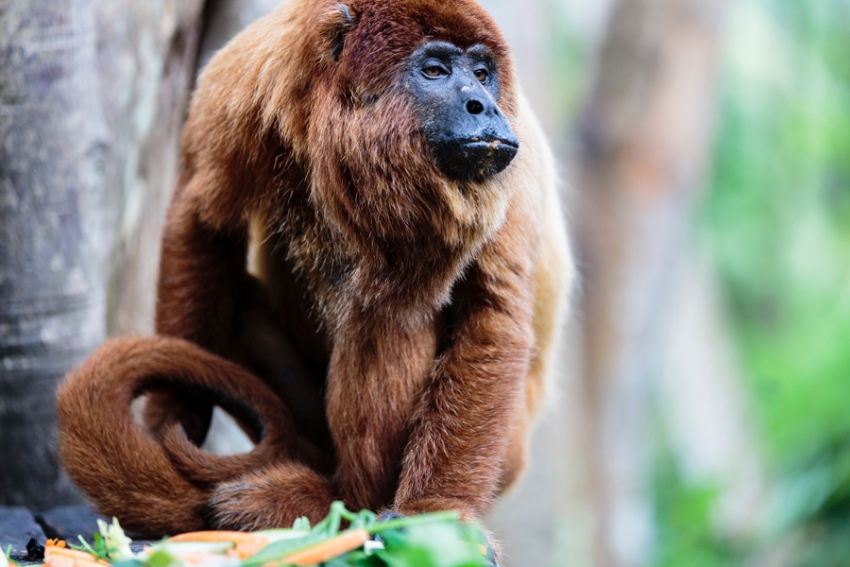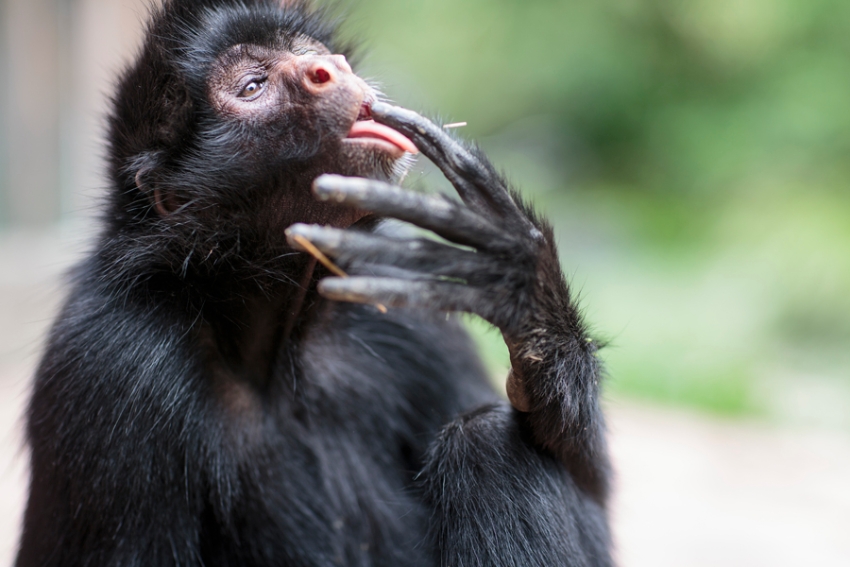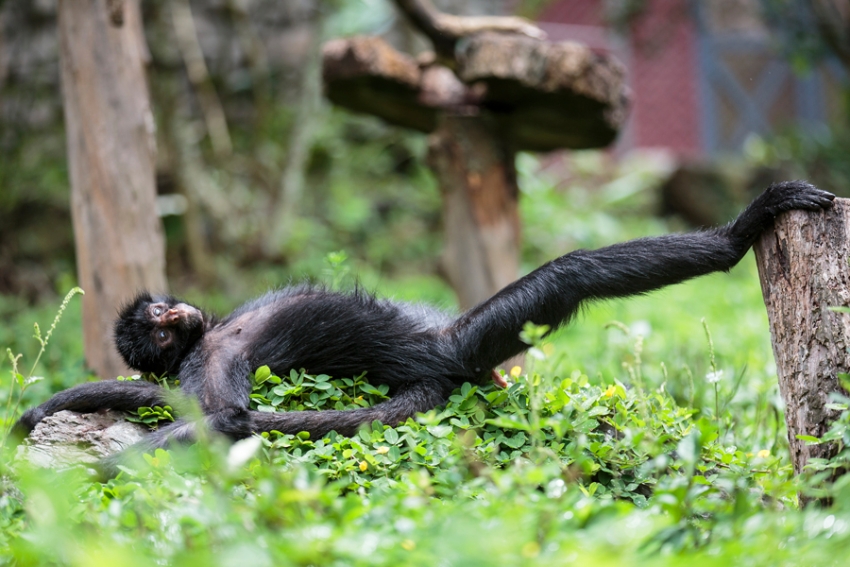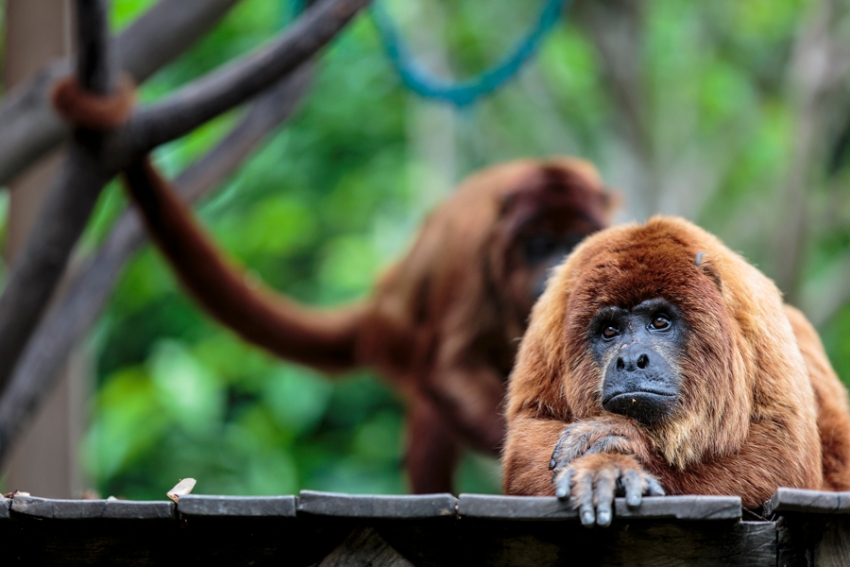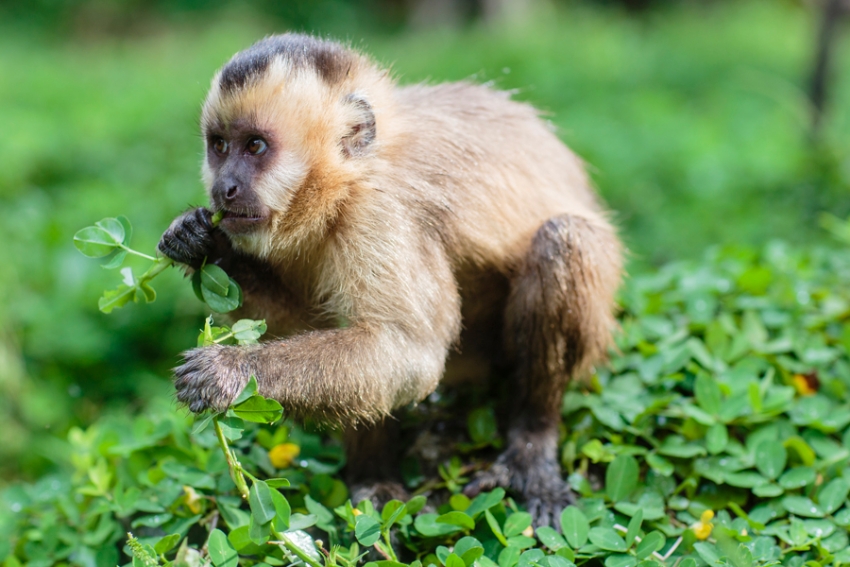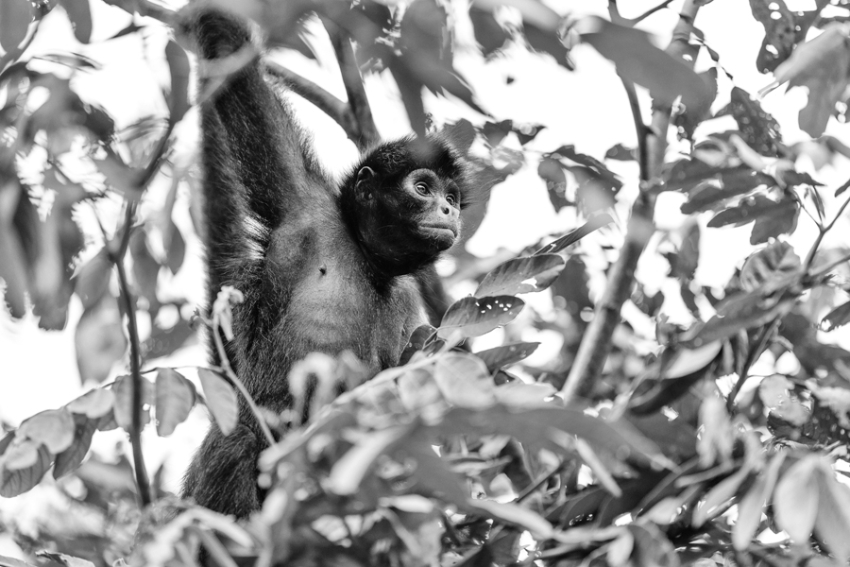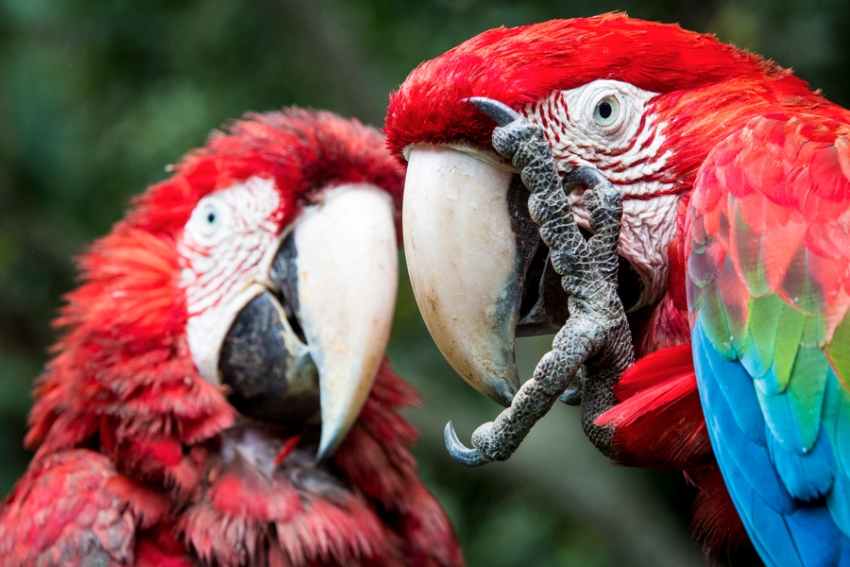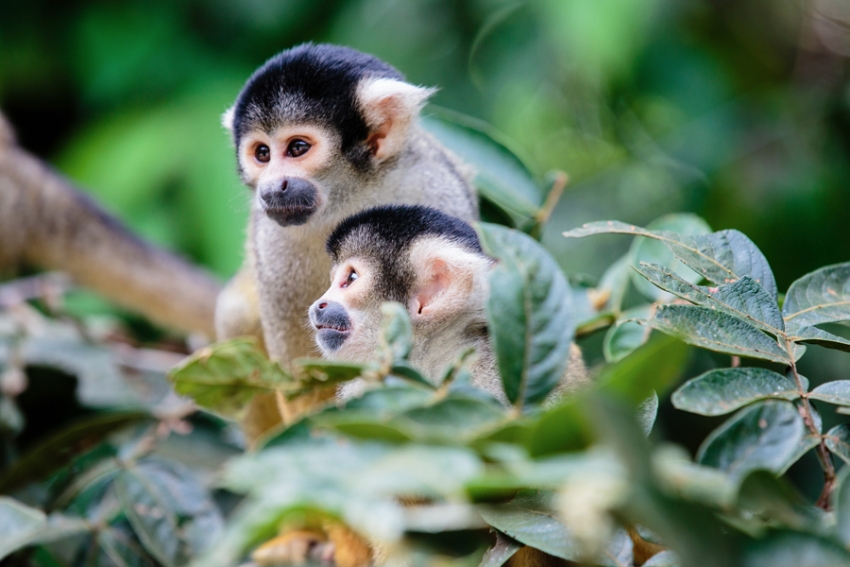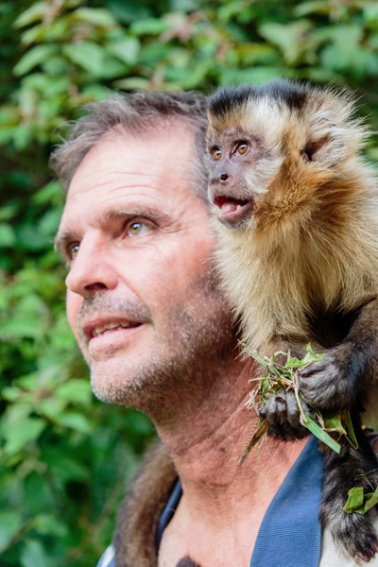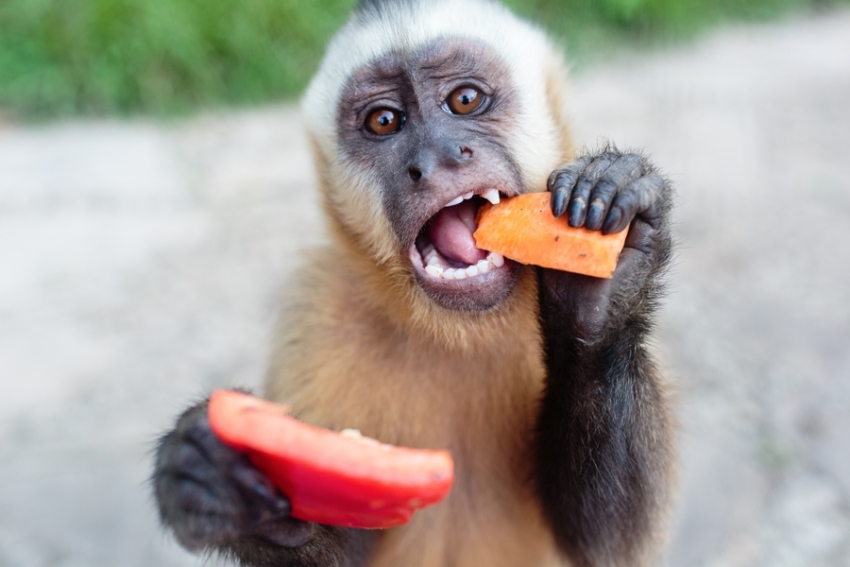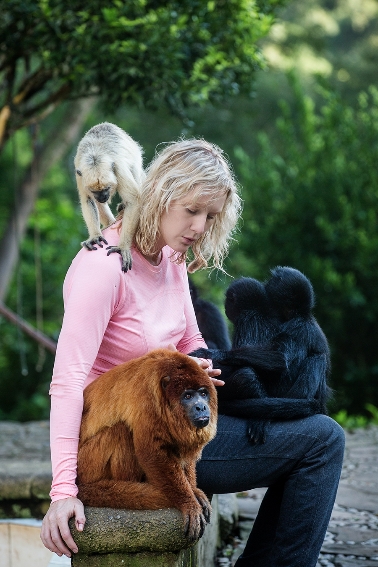Volunteering at La Senda Verde Animal Refuge in Bolivia on Behalf of Photographers without Borders – Part 2 – Yungas, Bolivia
“Until one has loved an animal, a part of one’s soul remains unawakened.”
– Anatole France
La Senda Verde, Yungas Bolivia- March 17-April 1st
She approaches me slowly and my heart skips a beat. She climbs up my legs and slowly wraps her long arms and legs around me. I feel her strong tail wrap gently around me waist. She lies her head on my shoulder and nuzzles my neck, as she settles in for a nap. Pimienta, a black spider monkey, has just chosen me as her new friend. It’s only day 2 at Senda Verde, many more adventures await…
La Senda Verde is a wildlife refuge that started 10 years ago and has been taking in animals rescued from trafficking, the black market, or abusive owners. It is nestled along the bank of a river in Yungas, which is a beautiful region where the Amazon meets the Andes, known as The Cloud Forest. La Senda Verde means, “The Green Path.” It is the salvation for these forgotten animals; it’s their second chance.
There are over 400 rescued animals, which range from Capuchin monkeys, to spider monkeys, to turtles, to bears, to a crocodile and more, come from abusive circumstances and are living a very happy and free life at the refuge. Some, being kept as pets, have been beaten and abused, some even have eyes missing. Some animals were used to pickpocket tourists. Therefore, are so used to human contact that it is next to impossible to reintegrate most of them into the wild for a number of reasons. Bolivian law also prohibits reintegration of rescued animals. One of the main reasons for this is that these animals contract unique pathogens, bacteria and immunity from their regular contact with humans and other animals–when they go back to the wild they risk infecting the wild population, who would not have immunity and can easily become susceptible to anything the. Also, while animals certainly have natural instincts, the animals at La Senda are not used to being in a wild environment–they risk being killed easily or re-captured by humans since they will seek human contact. They may also be killed by their own kind if perceived as weak. The refuge provides a safe, natural environment for the animals to live and thrive in. Vicki Ossio, one of the two owners believes that “every animal, like humans deserves a second chance,” and that is what they are giving to these animals. Many of these animals, such as the Spider monkeys are endangered. The organization does their best to have the animals play and interact with each other and less with humans, teaching them monkey behaviors. The volunteers practice “enrichment” with their animals, creating unique ways for them to keep their brains learning. For example, they will wrap nuts in a mass of vines for the monkeys to find, or they will put honey in a bottle and teach the monkey how to dip a stick in to drink. They have an onsite vet. They face many challenges, especially with taking care of a variety of species in one refuge, however they have created a unique environment to carry out their work with a volunteer and tourism-based funding design. I found that their volunteers were incredibly caring, knowledgeable, and sincere people who are dedicated to making the everyday lives of the animals exciting and enriching.
About Photographers Without Borders (PWB)
PWB was founded in 2009 by Danielle Da Silva, Chantal Da Silva, and Lachlan McVie. This team understands the power that photography has to tell stories, and that this power could be put to a really great cause, impacting everyone involved. Over the years they have worked for and been exposed to a great many different organizations and world institutions and in doing so, they realized the value of the work small, grassroots organizations provide, which is often overlooked. Many of these organizations have the dedication, passion, local trust and knowledge that larger more detached organizations lack. There exists a disparity in funding and visibility, however, where the organizations that are really making sustainable progress have a hard time getting access to funding and marketing materials are out of reach. PWB goal is to increase visibility of as many of these organizations as possible. PWB wants to highlight their wonderful work, and the people and places they affect through photography and mini-documentaries. Hopefully in the process PWB can shed light on the fact that the world may have problems, but it is also full of action, communities helping communities, and people coming together to help each other and the planet.
This kind of work is important because it sheds light on the everyday heroes of the world. We are exposed to so many “bestselling stories” about the world and we want to provide a fresh lens for people who are seeking more than what meets the eye. For photographers, I think many of us are looking for opportunities to do something positive with our art and to have an impact with our creativity. Many of us get caught up in making enough money to live that we forget about why we got into the trade in the first place. The experiences PWB creates are unique–unlike those your average tourist would be exposed to. PWB photographers are left inspired, and so they are able to evoke inspiration in the viewer as well.
The two images of me with monkeys were photographed by the other photographer on this assignment: Kristi Odom
Join Our List
Join our newsletter to get exclusive access to tips on clothing for your photoshoot, great photo locations, holiday offers, and new horse art at the print shop.
Subscribe →
